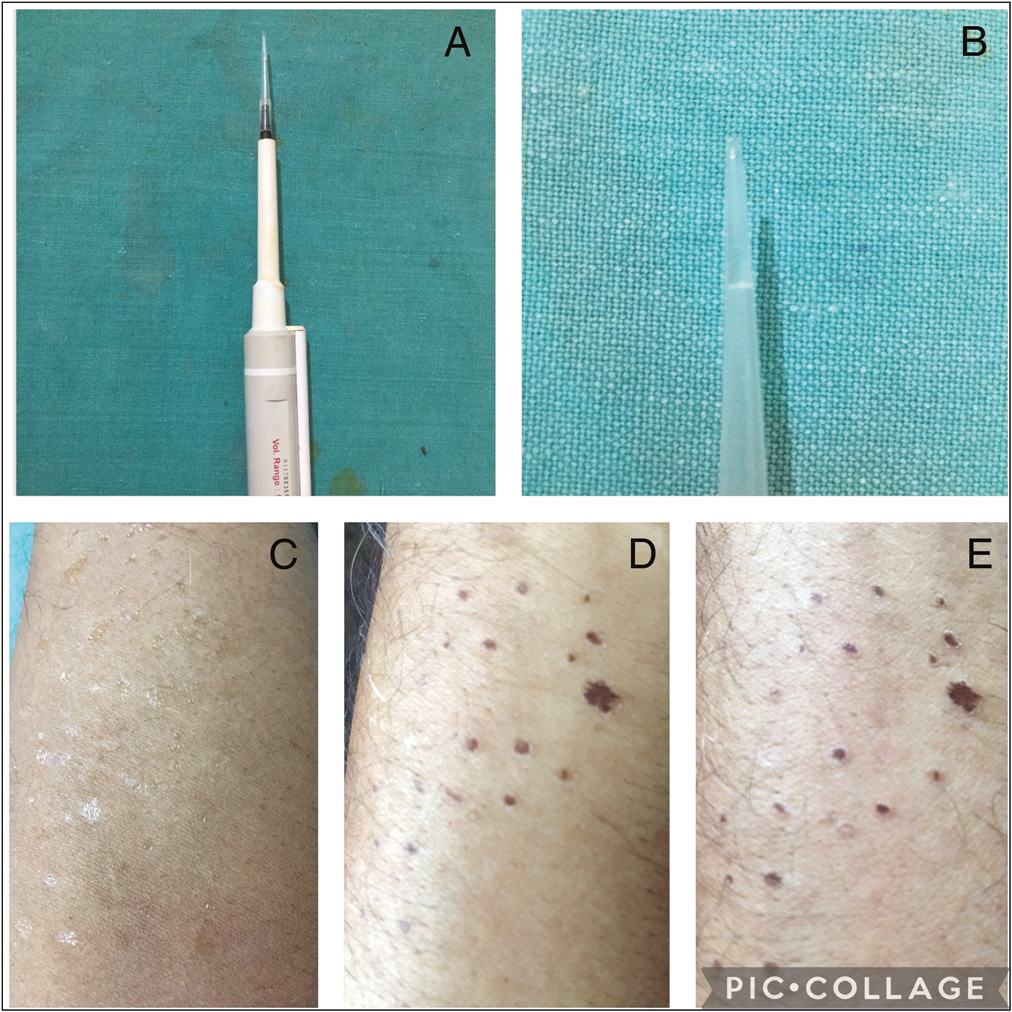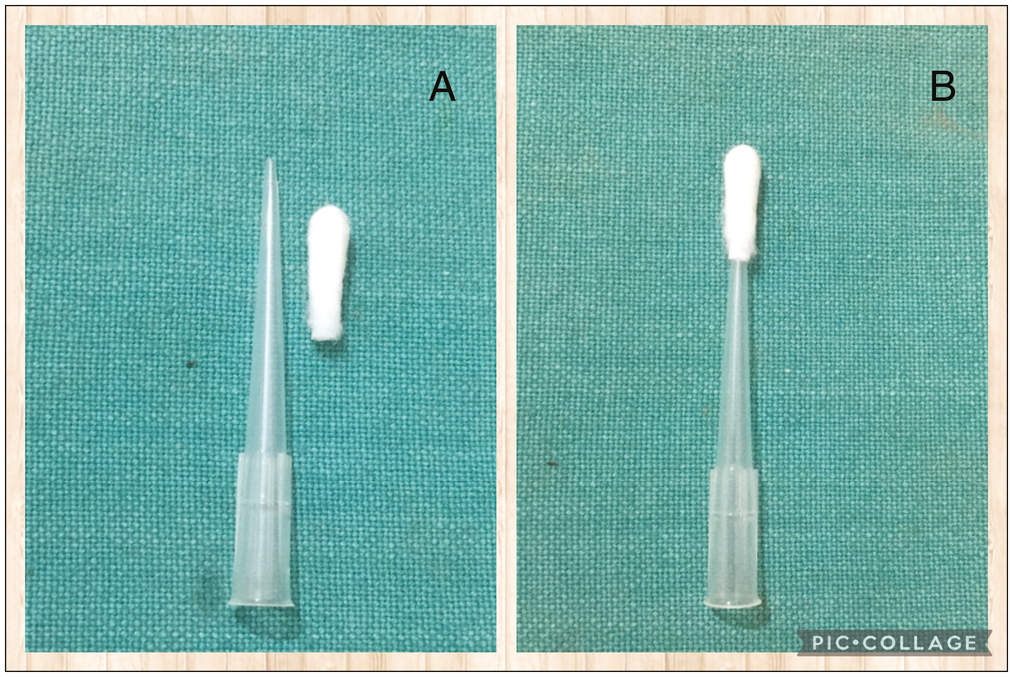Translate this page into:
A Novel Use of Micropipette Device Is a Better Option for Precise Chemical Cautery
Address for correspondence: Dr. Muhammed Mukhtar, Mukhtar Skin Centre, Katihar Medical College Road, Katihar 854105, Bihar, India. E-mail:drmmukhtar20@gmail.com
This article was originally published by Wolters Kluwer - Medknow and was migrated to Scientific Scholar after the change of Publisher.
Dear Editor
Chemical cautery is used in dermatology to destroy small-sized skin lesions on the face and body such as acne scars, freckles, lentigo, milia, molluscum contagiosum, xanthelasma, warts, and so on. Chemicals could leach into areas not intended for cauterization during a procedure. For precise and safe cautery, a variety of devices have been used.[12] However, procuring it takes some time, and aseptic precautions are required. Furthermore, there is the possibility of chemical loss and injury during the procurement process. To simplify the chemical cautery device procurement and its safety, we have used micropipette.
A variety of micropipette devices are used in medical and chemistry labs. A disposable micropipette tip costs 35–40 paisa per piece, and a micropipette device costs between 700 and 1000 rupees. Depending on the amount of chemical needed, the pipette volume can be adjusted from 1 to 100 µL or more. To cauterise skin lesions, we typically use a fixed amount of the chemical (1–3 µL) [Figure 1A and B]. It is held like a pen after the chemical has been withdrawn from its tip. The lesions are then only lightly touched with the pipette tips, with no pressure applied [Figure 1C–1E]. For safety, micropipette tip can be stuffed with cotton wick. Larger lesions are rolled over with the tip. A customized cotton bud with plastic stick can be fixed over micropipette tips to do fast cautery on a larger lesions [Figure 2A and B]. Chemicals flow instead of capillary action when they come into contact with the skin. The lesions are precisely cauterised. No chemical spills or injuries have occurred. As a precautionary measure, the disposable micropipette tips are discarded. As a result, the graded micropipette device with disposable tips is an excellent choice. Thus, for precise chemical cautery, the graded micropipette device with disposable tips is a better and simpler alternative option.

- (A and B) Micropipette device having 3 µL of chemical in its tips. (C–E) The skin is precisely cauterized by touching with micropipette tips filled with trichloroacetic acid

- (A and B) A customized bud of plastic hollow swab stick is made to fix over micropipette tip for cautery of large lesion
Declaration of patient consent
The authors certify that they have obtained all appropriate patient consent forms. In the form the patient(s) has/have given his/her/their consent for his/her/their images and other clinical information to be reported in the journal. The patients understand that their names and initials will not be published and due efforts will be made to conceal their identity, but anonymity cannot be guaranteed.
Financial support and sponsorship
Not applicable.
Conflicts of interest
There are no conflicts of interest.





